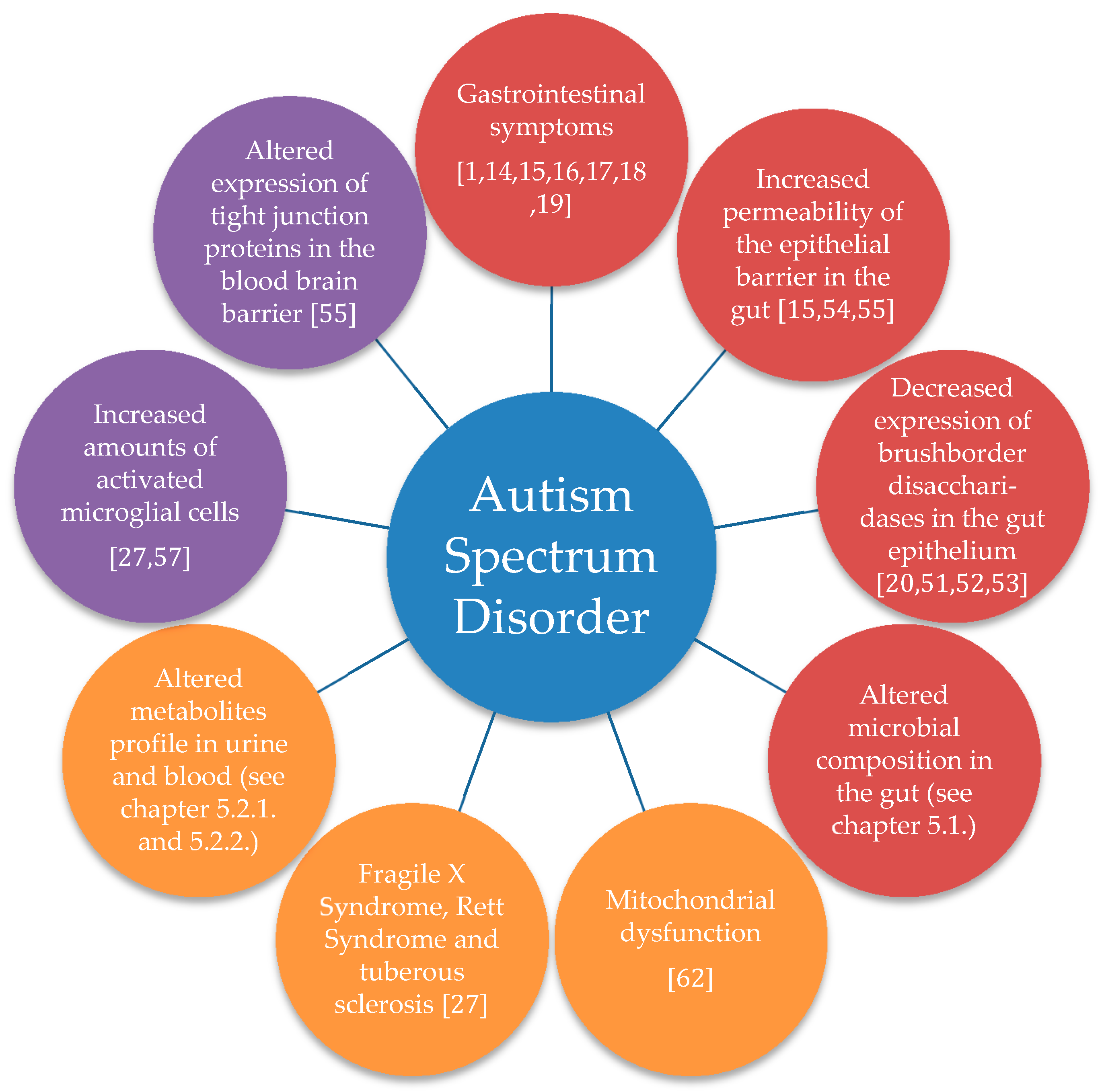17 4.4. Overview of the Gut-Brain Axis
Learning Objectives
- Understand the role of the gut-brain axis
- Understand the correlation between the enteric and central nervous systems
- Understand the varying effects gut microbiota and neurological status can have on one another
When discussing the gut-brain axis, we are exploring the intimate and dynamic relationship between the central nervous system and the composition of our gut. A better way to refer to our gut is the enteric nervous system, which is part of the peripheral nervous system that independently controls the gastrointestinal tract. Our gut is composed of many different microbes, making up the gut microbiota. These gut microbes can be helpful, neutral, and at times disruptive. There have been many clear correlations made between gut bacterial composition and dysbiosis leading to neurological disorders. Studies have shown that through manipulation of gut microbiota, an influence can be made on cerebral amyloid deposition, which is a key characteristic of our disorder of focus, Alzheimer’s disease.

To give some insight on other studied correlations between gut health and neurological diseases other than Alzheimer’s, we’ll take a look at a few other disorders that are prevalent in this topic.
Autism Spectrum Disorder (ASD)
Autism spectrum disorder (ASD) is a disorder that results from a gene mutation that affects neuron communication in the brain. This specific mutation is the R451C mutation encoding the neuroligin‐3 protein. Through using mice models in specific studies, there have been results suggesting that this same gene mutation that leads to ASD progression also has ties to disfunction in the gut. This correlation is called the “gut-brain link”. This mutation alters the enteric nervous system and has specific effects on contractions of the gut, quantity of neurons found in the small intestine, the rate at which food moves through the small intestine. It also ties to responses to a critical neurotransmitter that plays a key role in ASD. In mice models, this mutation also led to general dysfunction of the gastrointestinal tract and influenced gut microbe populations.

Multiple Sclerosis (MS)
Multiple Sclerosis (MS) is a neurodegenerative autoimmune disorder affecting the central nervous system. Evidence in studies looking at correlation between changes in gut microbiota composition can result in imbalances that can lead to disease. This relationship is so closely knit that using the gut route for MS treatment is being heavily considered. There have been tests conducted using samples from MS patients’ gut microbiota showing that there are measurable alterations in specific bacterial taxa, some in which are associated with cytokines that promote inflammation. This relationship along with the proven correlation of T regulatory cells which can become dysfunctional as a result of gut microbiota composition in experimental models, show the intimate and reciprocal relationship between the host and gut microbiota.

Parkinson’s Disease
Parkinson’s disease is another disorder of the nervous system that mainly affects movement. The main systems of the body that are affected by this disease is the enteric nervous system, directly affecting gut function, and parasympathetic nerves. Investigating the comparison of fecal microbiomes in a study which compared typical microbiota to the microbiota of Parkinson’s disease patients has lead to underlying discovery in differences concerning the gut microbiota. Studies proved the massive increases and decreases in specific bacterial taxa such as the large reduction of Prevotellaceae in MS patients. This finding amongst many other correlations backed the point that there is indeed correlation between the gut microbiota composition and the neurological characteristics of people with Parkinson’s disease.

Moving forward, we will mainly be looking at Alzheimer’s disease and the role that the gut microbiota plays in correlation with this neurodegenerative disease.
Condition in which the bacteria of the gut become imbalanced.
